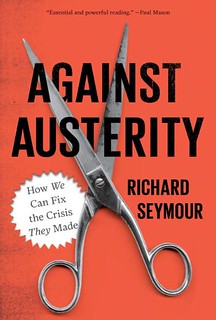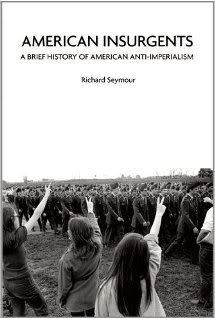Friday, December 10, 2004
John Rentoul denies reality. posted by Richard Seymour
So, how many did 'we' really kill? That is the homework set for Independent readers by ultra-Blairite columnist John Rentoul today. He sets some helpful correctives against the obscene bias displayed by the authors of the Lancet report, which would be even more helpful if Rentoul had the faintest idea what he is talking about. Fernando Pessoa wrote in his 'Factless Autobiography' that "to read is to dream, guided by another's hand". A little imagination should tell you whose hand guided Rentoul's idle dreams as he whispered through the pages of the Lancet report. I'll take his claims one by one.First, Rentoul establishes the importance of the question. "Whether 194,000 have died as a result of the invasion, or 8,000, is terribly important. ... For most people ... it must be suspected that where the real figure is within that range would make quite a difference to their view of the morality of invading Iraq." So, any attempt to minimise the numbers could reasonably be construed as a simultaneous attempt to justify the war on Iraq.
Let the minimising begin:
[The 100,000 figure] is only the central point of a range that extends from 8,000 to 194,000. This huge disparity was mocked ignorantly by one American commentator as "not an estimate, it's a dartboard". It was also defended, equally ignorantly, by the editor of The Lancet, who said: "It's highly probable the figure is 98,000. Anything more or less is much less probable." Both wrong. What the figures say is that there is a 95 per cent chance that the true figure lies between 8,000 and 194,000. There is a 5 per cent chance that it is even lower or even higher. And the probability that any number is right gets lower the further away from 98,000 it is, up or down, but even so the spread of possibilities is unusually wide.
I leave to your consideration whether the editor of the Lancet, the report's authors, and those who conducted the extensive peer reviews are really more ignorant than John Rentoul, who is not a scientist to my knowledge. Oh, but he is a journalist, and he is supposed to check his claims. The defense proffered by the authors, which Rentoul might have examined, was supplied to the Tomb in response to Fred Kaplan's 'ignorant' criticism:
On page five of the report. second to last paragraph, the authors do
give us
a margin of sampling error. They have not found a hard-and-fast 98,000
additional deaths, but a range from 8,000 to 194,000.
That is correct. Research is more than summarizing data, it is also
interpretation. If we had just visited the 32 neighborhoods without
Falluja and did not look at the data or think about them, we would have
reported 98,000 deaths, and said the measure was so imprecise that there
was a 2.5% chance that there had been less than 8,000 deaths, a 10%
chance that there had been less than about 45,000 deaths,....all of
those assumptions that go with normal distributions. But we had two
other pieces of information. First, violence accounted for only 2% of
deaths before the war and was the main cause of death after the
invasion. That is
something new, consistent with the dramatic rise in mortality and
reduces the likelihood that
the true number was at the lower end of the confidence range. Secondly,
there is the Falluja
data, which imply that there are pockets of Anbar, or other communities
like Falluja, experiencing intense conflict, that have far more deaths
than the rest of the country. We set that aside these data in
statistical analysis because the result in this cluster was such an
outlier, but it tells us that the true death toll is
far more likely to be on the high-side of our point estimate than on the
low side.
"That is," Crooked Timber comments "the sample contains important information which is not summarised in the confidence interval, but which tells you that the central estimate is not likely to be a massive overestimate." If Rentoul for some reason refuses to inspect the Tomb, so much the worse for him. Ignorance is no excuse. The inference, of course, is that Rentoul, besides having failed to check his claims, hasn't understood confidence intervals (as indeed I didn't either until given a brisk education on the topic).
Moving on:
And there are good reasons for thinking that the true figure is towards the lower end of The Lancet's range. The 98,000 figure is extrapolated from an excess of 44 deaths reported since the invasion. Of these, most - 23 - were not caused by violence. They were attributed to heart attacks, strokes, accidents, "neonatal and unexplained infant deaths", and infectious diseases. This is curious, considering the poor state of Iraqi health services before the invasion.
The figure of 44 excess deaths is only reached by excluding Fallujah, making the assumptions of the report highly conservative . Of these, 18 were attributed to heart attack and stroke, and 11 were attributed to chronic illnesses; deaths resulting from violence accounted for 73, or 44 if you exclude the 52 which are recorded in Fallujah, which the authors did. Further, and this is a curious point of ommission, Rentoul does not mention that while deaths resulting from heart attacks, strokes and chronic illnesses increased after the invasion, those resulting from violence increased much more dramatically - from accounting for 2% to accounting for 51% (or 37% if Fallujah is ommited). As the report notes, the "Violence-specific mortality rate went up 58-fold".
Rentoul's next attempt is to suggest that the authors have constructed the figures with a bias toward a low 'baseline' in Iraq:
More plausible, I would have thought, is that The Lancet study suffers from recall bias, a well-known phenomenon in such surveys where interviewees find it harder to remember accurately events that took place long ago. This would reduce the estimated pre-war death rate, and make it seem that there were more "excess" deaths after the invasion.
The study was conducted both before and after the invasion, but the recall period is set at 2-7 years, so recall bias is something to be accounted for. Here is what the report says:
[M]ost of the increase in infant mortality is plausibly linked to the conflict, although we acknowledge the potential for recall bias to create an apparent increase in infant mortality.
We believe it unlikely that recall bias existed in the reporting of non-infant deaths, because of the certainty and precision with which these deaths were reported, and the importance of burial ceremonies in the Iraqi culture. The under-reporting of adult deaths recently or since the invasion to hide combatant deaths would lead us to underestimate the death toll associated with the invasion and occupation of Iraq.
The bulk of the deaths reported are among adults and not children.
Next:
However, sticking for the moment with the 44 "excess" deaths reported in The Lancet study, just under half - 21 - were caused by violence. But most of these were not attributed to coalition forces. Seven were criminal, two were anti-coalition fighters, two were unknown and one was caused by Saddam's forces in the early days of the war. Which leaves the nine for which US, British or other allied forces were blamed.
This both misconstrues the data and misses the point. Here is the passage in the report Rentoul is referring to:
Table 2 includes 12 violent deaths not attributed to coalition forces, including 11 men and one woman. Of these, two were attributed to anti-coalition forces, two were of unknown origin, seven were criminal murders, and one was from the previous regime during the invasion.
Note that the authors refer to Table 2, not to the figure excluding Fallujah. Making adjustments for Fallujah (removing, as with the total figures, 49.92% of those deaths), we are left with 6 of 21 deaths not attributable to coalition sources. Hence the claim that the bulk of violent deaths visited on civilians were attributable to coalition actions.
It is as well, while we are at it to note what the report says on violent deaths:
The main causes of death reported for the 14·6 months before the invasion were myocardial infarction, cerebrovascular accidents, and consequences of other chronic disorders, accounting for 22 (48%) reported deaths (table 2). After the war began, violence was the most commonly reported cause of death, either including (73/142 [51%]) or excluding (21/89 [24%]) the Falluja data, followed by myocardial infarction and cerebrovascular accidents (n=18) and accidents (n=13; table 2). [Emphasis added]
What follows from Rentoul's nit-picking? All of his criticisms were accounted for in the report, at least those that have been properly conceived. (He also goes to the usual length of mentioning the Iraq Body Count figure which, as its authors note, is likely specifically to be an understimate, and which the report notes has "low sensitivity" as most "passive surveillance studies" do). We are still left with a likely 100,000 excess deaths since the estimate has discounted for those factors Rentoul rakes up, of which the most common type is violent. And we are still left with the coalition forces being responsible for most of those deaths. A further point could be made that, if there has been a general increase in deaths due to diseases, heart attacks and other medical conditions, this could be in part due to the serious and shocking decline in the state of the country's infrastructure, specifically the medical infrastructure. However you construe (or misconstrue) the data, we are still left with a shocking rise in the level of mortality, and this is directly attributable to the decision to invade.
Since Rentoul sets out his stall at the start of the article by suggesting that the lower the likely figure, the less insupportable the war will be, this can be recorded as yet another failed attempt to cover for those who waged it.










